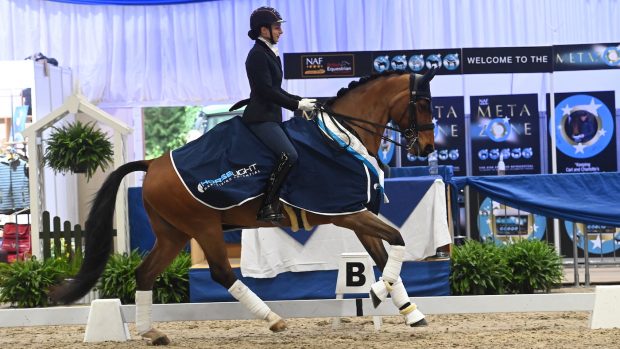The British Association for Shooting and Conservation (BASC) has produced a safety code for the organisers of shoots to try and avoid problems between themselves and riders after meeting with the British Horse Society.
The BHS hosted a joint meeting with several shooting organisations to discuss the way forward following an incident last year. Barbara Jeffery, a BHS member, was badly injured when her horse boltedafter an incident adjacent to a shoot.
The organisations attending the meeting included the BASC, the National Gamekeepers Organisation (NGO), the Union for Country Sports Workers (UCSW) the Campaign for Shooting (Countryside Alliance) and representatives from Exmoor National Park.
Simon Hamlyn, BASC director of operations, said: “There have been a number of reported incidents where shoots have inadvertently created problems for riders. Consideration of the needs of other countryside users is an important responsibility for any shoot organiser.
“As the largest fieldsports organisation in the UK, we have taken the lead on this issue by producing a simple guide to dealing with potential risks. The BASC has worked with riders and other organisations to produce this safety code.”
The BASC safety code for Horses and Shooting is available on the BASC website www.basc.org.uk or by sending an SAE to Horse Safety, BASC at Marford Mill, Rossett, Wrexham LL12 0HL.
The BHS, British Riding Clubs and shoot organisations are now planning a publicity campaign to ensure that both riders and shooters are made aware of the necessity to keep each other informed, and for riders to understand how shoots are run.
Sheila Hardy, BHS Head of Safety who chaired the meeting, said: “We are pleased that the shooting fraternity are taking this seriously. The organisations involved are taking steps to ensure their members have full knowledge of risk assessment procedures. Having clear guidelines of how shoots should proceed when close to horses and riders included in the new code is good news.
“We look forward to working with the shooting bodies on this joint promotion, thus reducing any risk to riders. There is room in the countryside for both activities and with common sense and co-operation they can do so safely, to the benefit of all concerned.”
Barbara’s husband Peter Jeffery said: “It is encouraging to see how the equestrian and shooting interests have responded once the problem has been highlighted. Anything which reduces the chance ofanother rider being injured is to be applauded.”
“I do hope, however, that it will be an ongoing interest and that both sides are able to keep the situation under review.”
HORSES AND SHOOTING – DEALING WITH THE RISKS
- Riders and shooters should show courtesy and consideration towards each other and be vigilant at all times.
- All shooting and beating should stop from the moment horses are seen, until they have safely passed.
- All guns should be made aware of bridleways and fields where horses may be present. Drives should be organised to take these locations into account
- Where possible, shoots should liase with local riders or yards and inform them when and where formal shoots will take place. Riders should be on alert for signs that a shoot is in progress.
- Shoots should consider whether it is appropriate to publish the dates of shooting days and to post warning notices locally.
- All shooters and riders should have adequate third party insurance cover.




